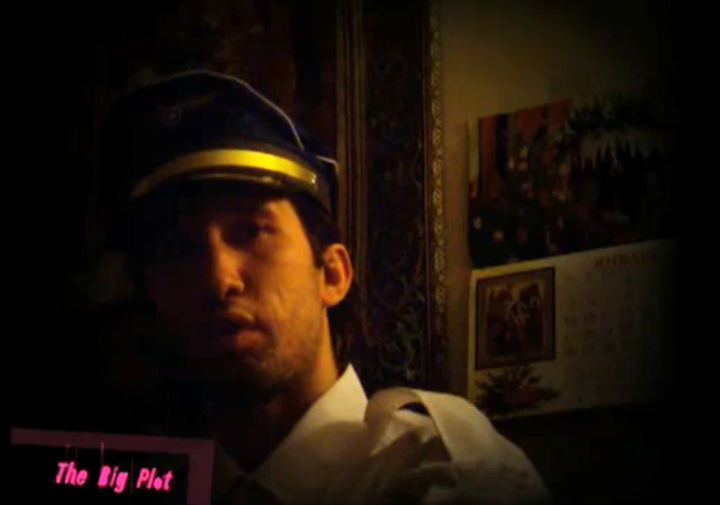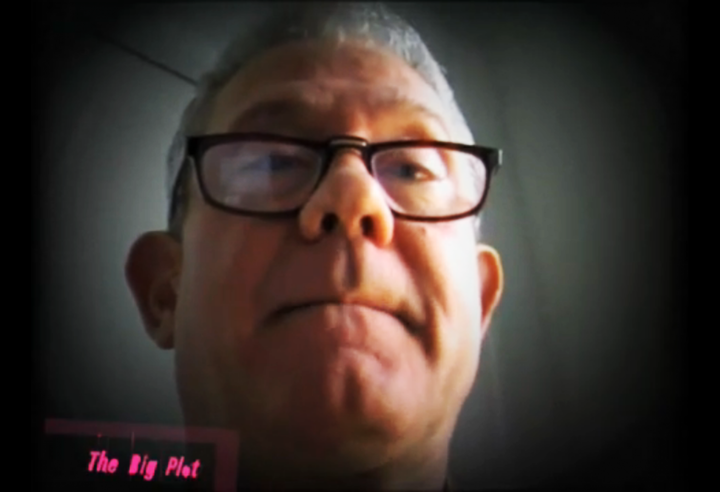Issue 3/2009 - Net section
Alternative Reality Game
Paolo Cirio’s online Project »The Big Plot« creates new forms of collective storytelling
Paolo Cirio’s »The Big Plot« is a multifaceted narrative that creates intertwining paths between its four protagonists, then allows other users to create additional characters who can interact with them in a genuinely engaging and complex story. It’s a narrative developed on the web through different social networks, and also in reality, through specific actions. It takes the so-called »alternative reality game«, then actively implements a part of it in real life as well. The resulting »recombinant fiction« closely approximates our multi-media, multi-dimensional everyday lives. Paolo Cirio is developing the project at a residency at the Werkleitz Center for Media Art in Halle.
[b]Alessandro Ludovico:[/b] You defined »The Big Plot« as a romantic spy-story played in the info-sphere. Can you describe it in more detail?
[b]Paolo Cirio:[/b] It’s experimental storytelling, which uses videos, texts, pictures, signs and performances to tell a story about espionage, politics and personal relationships. It’s presented across several media channels and in public spaces, and includes audience participation. The spectators play a crucial role in the unfolding of the story; they follow clues by reading diaries and watching videos of the characters, they assist at public events, they find other pieces of the story disseminated over the internet and they can contact the characters to find out more information. The fiction is based on a true story; the main character is a Russian spy who was arrested in Canada three years ago. By using his real cover name, I exploited his identity and his life to fictionalize an alleged plot by a Russian political movement. One of the aims of this movement (which has a counterpart in the real world) is to create a super-state called Eurasia. During the story, political aspirations are thwarted by complicated love entanglements and weaknesses in the psychological integrity of each of the characters.
[b]Ludovico:[/b] The story revolves around four main characters. Each has uploaded videos to their own YouTube channel and pictures to Flickr accounts. They each manage a Facebook account, and usually a blog. Some use still more platforms (such as a LinkedIn account), some use fewer. Do you conceive of social networks as just a means to properly channel specific types of information, or as platforms with specific qualities that need to be exploited as a group? How did you make use of them for the different characters?
[b]Cirio:[/b] Each character functions as a narrator and each chooses what to show us, providing a versatile, expressive tool to work with. Such active roles have implications for the story by developing distinct narrative voices through the way they manipulate media. So a character’s choice of social network platforms and the way they use these platforms helps to depict traits and qualities. For example, the spy, who is the oldest character, does not over-expose himself. He posts a little photography work on Flickr and has a Facebook account, but only because his friends have pressured him. In contrast, the political leader spreads his propaganda widely, making use of multiple platforms, while the journalist exploits the social platforms appropriate to her job, such as LinkedIn. However here we need to make a distinction: between the media which log our lives without our consent or control, and those we intentionally use to broadcast our personal information. To acknowledge this important difference, the project also sets out some information on websites such as Google and Wikipedia. Each medium aims to have an appropriate narrative function. The notion of Personal Media should have a broader meaning, in which any technology that allows us to broadcast personal content becomes a powerful and dangerous tool for social relationships. Portable devices that increase interconnectedness, social networking applications that facilitate interpersonal communication, platforms for self-publishing and a general loss of privacy – all these things affect how we experience our private lives and how we relate to others. The book »The Future of Reputation« By D.J.Solove explains some of these issues. In dramatic terms, the characters of any contemporary fiction should deal with this personal media, because they are the most used way of communicating the sentiments, events, relationships, etc. of ordinary people. The spectators’ empathy should be stronger when the fiction uses the same forms of expression as they use to articulate themselves in reality.
[b]Ludovico:[/b] You selected the four professional actors through a real casting process. Their recognisability comes primarily through their faces (as is the case with Facebook’s philosophy), so was this the most important element you considered in the selection, or were there others? Did you plan their interrelationships?
[b]Cirio:[/b] Like a casting for a movie, I selected actors who better personified the characters of the story, but in a way which blurs actors’ real lives and fictional identities. For example, the middle management psychologist is actually a real New York psychologist, his second job after being an actor. He performed and recorded some of the video episodes in his studio. The young leader is a native Russian guy, who sang in a Russian rock band with its own real-life fan base. The journalist is played by an actress who lives between Toronto and Berlin, and who often travels in Russia as well. I also asked the actors to give me some of their intimate pictures, which portray them with real friends and relatives. This posting of real pictures on the characters’ blogs and Facebook profiles, combined with fictional details of their experiences, created a perilous verisimilitude, which resulted in some actors at the audition stage refusing to take. I was extremely determined to obscure the boundaries of real and fictional spheres, without losing the specific attributes of both.
[b]Ludovico:[/b] It’s essential that part of »The Big Plot« takes place in physical reality, especially some of your interventions, which can be described as creating an »alternate reality game«. What’s your approach to playing online and offline at the same time? Did you face any unexpected results?
[b]Cirio:[/b] Through my experience creating and orchestrating smart-mobs with street-art happenings, I have become interested in actions conducted in public spaces that are organized via digital networks, in which participants are directed by instructions to show up at a real-world location. Unsettling the social conventions of public spaces is one of my major ambitions. Inevitably, I saw the creation of an Alternative Reality Game as a way to bring together all my former experiences and to draw on theatre and cinema, which are also my passions. The point of working on physical reality is that if a project is not declared as fiction, or art, people believe in it much more than online reality, where people are always more sceptical and the impact is lessened; working with both could simulate reality almost perfectly. This simulation is the scenery and the stage where roles play the fiction.
[b]Ludovico:[/b] After the plot reached an appropriate stage of development you decided to open up the platform and thus the narrative. Then, after some press feedback, you told me that a student community in U.S. had started to develop many more characters and stories, fundamentally shaping the story. Who are they and what, in your opinion, motivated them to embrace the story?
[b]Cirio:[/b] Honestly, I don’t have much information about who they are, but I’m quite impressed by their determination and persistence in taking part in the story. They set up more than twenty new characters with Facebook profiles, blogs, twitters, and so on – some even posted video pieces. They follow the plot-line, but they create new pieces of the story, over which I lose all control, except via the four main characters who try to lead them dramaturgically. From an initial experiment, I have created a real participative drama, which is not a hoax or a game but genuine fiction. I think that with the Alternative Reality Game, we definitely surpass older notions of passive media spectatorship. People have learned some rules and practices – they now know how to act and play in immersive stories.
[b]Ludovico:[/b] This movie is scattered in online platforms and physical reality with multiple points of reference. Are you comfortable in calling it a »post-movie«? And why do you think it can be defined as »recombinant fiction«?
[b]Cirio:[/b] It does look like a post-movie, but there is an ongoing discussion about what to call this »new form of art«, and there have already been many suggestions. I use »recombinant« because I think that the Critical Art Ensemble theory of Recombinant Theatre has given prophetic and visionary ideas of new forms of fiction, specifically when they have a political or social dimension. Personally, I see »The Big Plot« as a conceptual art piece, though it’s difficult to maintain a formal integrity because of its experimental nature.
http://www.paolocirio.net
http://www.thebigplot.net

